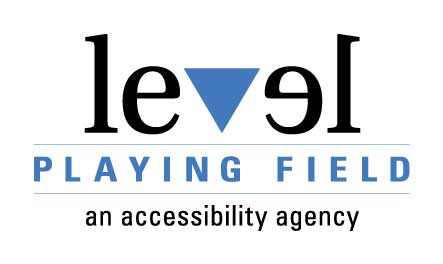ABOUT UNIVERSAL DESIGN
Universal Design is the process of designing to meet the needs of all users
About Universal Design
What is Universal Design?
The concept of Universal Design continues to evolve, as the different experiences and needs of individual users in various spaces also continue to be better understood and improved upon.
Universal Design is the design and composition of an environment so that it can be accessed, understood and used to the greatest extent possible by all people regardless of their age, size, ability or disability. An environment (or any building, product, or service in that environment) should be designed to meet the needs of all people who wish to use it. This is not a special requirement, for the benefit of only a minority of the population. It is a fundamental condition of good design. If an environment is accessible, usable, convenient and a pleasure to use, everyone benefits. By considering the diverse needs and abilities of all throughout the design process, universal design creates products, services and environments that meet peoples’ needs. Simply put, universal design is good design.
How does Level Playing Field use Universal Design?
The process Level Playing Field uses in applying Universal Design to our clients and projects is:
1. Identify the Application
Specify the product or environment to which you wish to apply Universal Design.
2. Define the Universe
Describe the overall population (e.g., users of service) and describe the diverse characteristics of potential members of the user group which the application is designed for (e.g., students, faculty and staff with diverse characteristics with respect to gender, age; size, ethnicity and race, native language, learning style and abilities to see, hear, manipulate objects, read and communicate).
3. Involve Consumers
Consider and involve people with diverse characteristics (as identified in Step 2) in all phases of the development, implementation and evaluation of the application. Also gain perspectives through diversity programs, such as the campus disability services office. Make these processes known with appropriate signage, publications and websites
4. Adopt Guidelines or Standards
Create or select existing Universal Design guidelines/standards and integrate them with other best practices within the field of the specific application.
5. Apply Guidelines or Standards
Apply Universal Design in concert with best practices within the field (as identified in Step 4) to the overall design of the application, all sub-components of the application and all ongoing operations (e.g., procurement processes and staff training) to maximize the benefit of the application to individuals with the wide variety of characteristics (identified in Step 2).
6. Plan for Accommodations
Develop processes to address accommodation requests (e.g., purchase of assistive technology and arrangement of sign language interpreters) from individuals for whom the design of the application does not automatically provide access.
7. Train and Support
Tailor and deliver ongoing training and support to stakeholders (e.g., instructors, computer support staff, procurement officers, volunteers). Share institutional goals with respect to diversity and inclusion and practices for ensuring welcoming, accessible and inclusive experiences for everyone.
8. Evaluate
Include Universal Design measures in periodic evaluations of the application, evaluate the application with a diverse group of users and make modifications based on feedback. Provide ways to collect input from users (e.g., through online and printed instruments and communications with staff).
